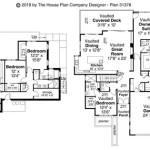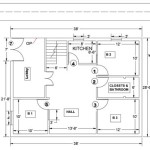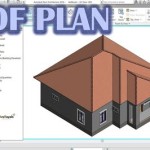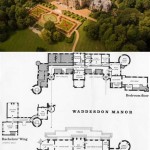How to Make a 3D Model of Planet Jupiter
Creating a 3D model of Jupiter allows for visualizing the gas giant’s complex atmospheric features and understanding its scale relative to other celestial bodies. This process involves several steps, from gathering reference data to employing 3D modeling software and texturing techniques to achieve a visually accurate representation. This article will outline the process, focusing on the key aspects required to generate a compelling and informative 3D model of Jupiter.
Gathering Reference Material
The initial phase involves accumulating sufficient reference material. High-quality images of Jupiter, especially those captured by spacecraft like Voyager, Cassini, and Juno, are essential. These images provide detailed information about the planet's atmospheric bands, zones, belts, and the Great Red Spot. Websites like NASA's Jet Propulsion Laboratory (JPL) and the European Space Agency (ESA) offer extensive image libraries. Additionally, topographical data, while not directly applicable to a gas giant, can inform the placement and intensity of cloud formations. Scientific publications outlining Jupiter's atmospheric composition and dynamics are also crucial for accurately representing the color variations and textures.
It is also important to consider the projection of the reference images. Raw images from spacecraft usually have distortions due to the camera lens and the spherical shape of the planet. Correcting these distortions using image processing software like Photoshop or GIMP is vital to create seamless textures. Equirectangular projections are particularly useful, as they can be easily mapped onto a sphere in most 3D modeling software.
Furthermore, understanding the relative sizes and speeds of different atmospheric features is necessary for animating the model. Information about the wind speeds within Jupiter's atmosphere, and how these speeds vary across different latitudes, can be utilized to create realistic animations of cloud movement. This data is usually available in scientific papers and databases.
3D Modeling Software Selection and Sphere Creation
Selecting appropriate 3D modeling software is a critical decision. Popular choices include Blender (free and open-source), Autodesk Maya (industry standard), and Cinema 4D (known for its user-friendly interface). Each software package offers different strengths and weaknesses, so the choice depends on the user's familiarity, budget, and the intended use of the model. The core of the model is a sphere, representing Jupiter's overall shape.
Creating the sphere is usually a straightforward process. In Blender, for instance, you would add a UV Sphere object. It is important to increase the subdivisions of the sphere's mesh (the number of polygons) to ensure a smooth surface. A low polygon count will result in a faceted appearance, which detracts from the realism. A high polygon count, on the other hand, can strain computational resources. The optimal polygon count depends on the level of detail required and the capabilities of the computer being used.
Once the sphere is created, its diameter should be set to reflect Jupiter's actual size relative to other objects in the scene. This is particularly important if the model is intended for use in simulations or comparisons where accurate scale is necessary. The units of measurement used within the 3D software should also be carefully considered and consistently applied throughout the modeling process.
While Jupiter is often described as a perfect sphere, it exhibits a slight oblateness due to its rapid rotation. This means that its equatorial diameter is slightly larger than its polar diameter. Incorporating this oblateness into the model adds a degree of realism. This can be achieved by scaling the sphere along one axis in the 3D software, adjusting the amount of scaling based on Jupiter's known oblateness.
Texturing and Material Creation
Texturing is arguably the most crucial step in creating a realistic 3D model of Jupiter. It involves applying images or procedurally generated patterns to the surface of the sphere to simulate the planet's atmospheric features. This process is where the gathered reference material becomes invaluable.
The primary texture is usually a color map, which defines the colors of the different bands, zones, and belts. Creating this color map often involves stitching together multiple images of Jupiter to create a seamless, high-resolution texture. Image editing software is used to correct for inconsistencies in lighting and color balance between the different images. The Great Red Spot, a prominent feature of Jupiter, requires particular attention to detail. Its oval shape, intricate swirling patterns, and distinct color variations must be accurately reproduced in the texture.
In addition to the color map, other texture maps can be used to enhance the realism of the model. A bump map or normal map can be used to simulate subtle variations in the height of the cloud formations. This can add a sense of depth and volume to the atmosphere. A specular map can be used to control the reflectivity of different areas of the planet, simulating the way sunlight reflects off the cloud tops.
Many 3D modeling software packages allow for the creation of procedural textures. These textures are generated mathematically, rather than from images. Procedural textures can be useful for creating subtle variations in the cloud patterns, adding a layer of complexity that is difficult to achieve with image-based textures alone. Combining image-based textures with procedural textures can often yield the most realistic results.
The material properties of the model are also important. These properties define how the surface interacts with light. Adjusting parameters such as the roughness, metallicness, and subsurface scattering can significantly affect the appearance of the model. For instance, a rough surface will scatter light more diffusely, resulting in a matte appearance, while a smooth surface will reflect light more specularly, resulting in a glossy appearance.
Animating the Model (Optional)
While a static 3D model of Jupiter can be informative, animating the model can provide a more dynamic and engaging visual representation. Animation can be used to simulate the rotation of the planet, the movement of the atmospheric bands, and the evolution of the Great Red Spot.
Simulating the rotation of the planet is relatively straightforward. This involves rotating the sphere around its axis over time. The speed of rotation should be adjusted to match Jupiter's actual rotation period. It is important to note that Jupiter does not rotate as a solid body. Its equatorial regions rotate slightly faster than its polar regions. This differential rotation can be simulated by applying different rotation speeds to different areas of the planet's surface.
Animating the movement of the atmospheric bands is more complex. This can be achieved by creating animated textures that simulate the swirling patterns of the clouds. This often involves using techniques like texture offset and distortion. Understanding the wind speeds within Jupiter's atmosphere is crucial for creating realistic animations of cloud movement. Data on these wind speeds can be used to inform the movement and distortion of the textures.
The Great Red Spot is a dynamic feature that changes over time. Animating its evolution requires careful attention to detail. This can involve adjusting the shape, size, and color of the Great Red Spot over time, based on observations of its actual behavior. However, creating realistic dynamic animation of the Great Red Sport requires detailed observations, that are time consuming.
Lighting and Rendering
The final step in creating a 3D model of Jupiter is lighting and rendering. Lighting determines how the model is illuminated, while rendering is the process of generating an image from the 3D scene. Proper lighting can significantly enhance the realism and visual appeal of the model.
A simple setup might involve a single directional light representing the Sun. The intensity and color of the light should be adjusted to match the actual lighting conditions on Jupiter. Shadows can be enabled to add depth and dimension to the model. However, it is important to note that Jupiter's atmosphere scatters light significantly, resulting in soft shadows.
More complex lighting setups might involve multiple light sources, including ambient lights to simulate the diffuse scattering of light within the atmosphere. Environment maps, which are panoramic images that surround the scene, can also be used to add realistic lighting and reflections. For example, a starry sky environment map can add a sense of depth and realism to the scene.
Rendering involves using a rendering engine to generate an image from the 3D scene. Different rendering engines offer different features and capabilities. Some rendering engines are optimized for realism, while others are optimized for speed. The choice of rendering engine depends on the desired level of realism and the available computational resources.
Post-processing techniques, such as color correction, sharpening, and adding effects like bloom and lens flares, can be used to further enhance the visual appeal of the rendered image. These techniques can be applied using image editing software or within the rendering engine itself.

How To Make Planets Of The Solar System For Science Projects Aerospace Exhibitions Easy Way

Planet Jupiter Science Project

How To Make 3d Solar System Project For Science Fair Or School

How To Build A 3d Solar System Model With Kids Thoughtfully Sustainable

How To Make 3d Solar System Model Easy Project Making Step By School

How To Make A Diy 3d Solar System Model Mombrite

How To Make A Diy 3d Solar System Model Mombrite

How To Make 3d Model Of Solar System Science School Project Craft Ideas

Build A Model Of Jupiter

How To Make A Diy 3d Solar System Model Mombrite
Related Posts








